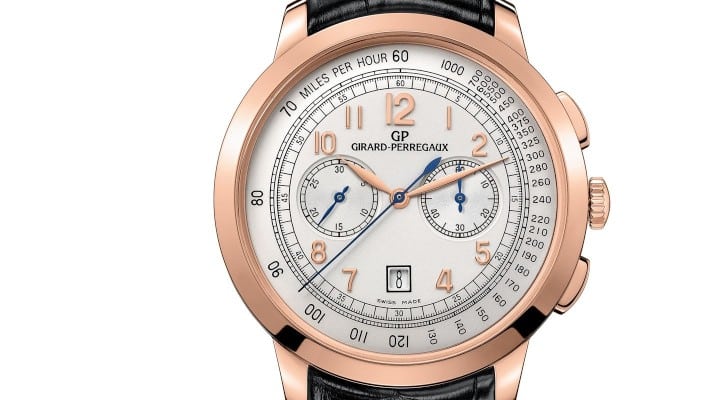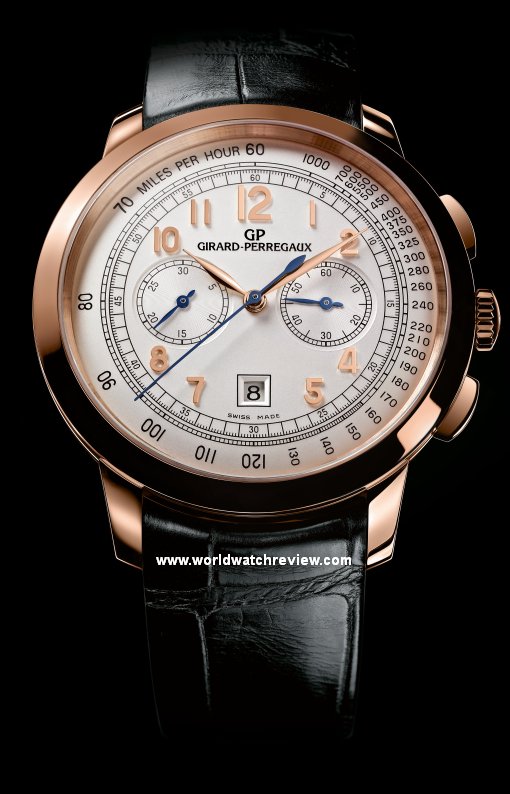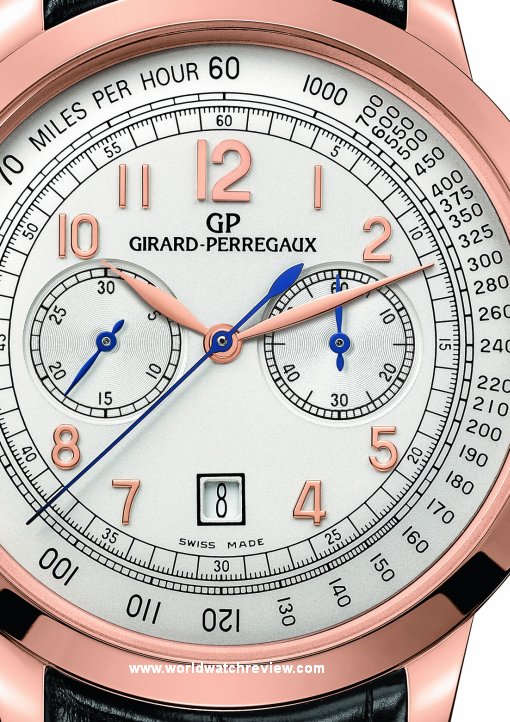
With its new Girard-Perregaux 1966 Chronograph (Ref. 49542-52-151-BK6A) the Swiss watchmaker updates the iconic chronograph model with a larger body and a slightly restyled dial and also equips it with a new version of their Caliber GP 3300 workhorse ‘tractor’ movement.
Overall Impression
The 2012 Girard-Perregaux 1966 Chronograph (Ref. 49542-52-151-BK6A) automatic chronograph that was first presented around three months ago during SIHH 2012 trade fair didn’t just condense from the healthy Swiss air.
If you would take just a couple of minutes to compare it to the gorgeous 1966 Chronograph (49539-52-151-BK6A) that was presented two years earlier, you will immediately notice that there only a few -minor at that- differences between the two.

I have an impression that the refreshed model was deliberately designed to look like a natural evolution of the 2010 year model with only some of its features updated to differentiate one from another. While some of the changes were not terribly successful in terms of making the watch more legible, they made it look even more elegant than before. I guess that was the idea.
Case & Strap
The first thing that you will probably notice right from the start is differences in size.
The Swiss-based brand follows the current trends in watchmaking and it is hard not to notice that even now, after the global financial meltdown of 2008, many customers still want their watches to be as massive as possible. Hence, the new version has grown in size from 40 mm to a lot more prominent 42 millimeters of meticulously polished 18-karat rose gold.
I didn’t have a chance to measure the chronograph push-pieces and the crown with a precise tool, but they are more or less the same and still allow you to operate it comfortably.
The polished rose gold bezel, too, is as narrow as it was and I like that, too. First of all, it makes the oversized watch look visually lighter due to changes in proportions. The second thing is that the dial aperture is now larger, too: even despite the piece featuring more information than before, the dial actually has more ‘air’ here.
As for the strap, it is crafted from black Alligator leather, features high-quality stitching, and is secured to your wrist with ardillon buckle in 18-karat rose gold.
Dial
Yes, perhaps the dial is the part that was changed the most.
The watch, for example, has finally received a simple calendar indicator, which is visible through a small date aperture at 6 o’clock, and its rose gold, stick-shaped hour markers were finally replaced with small Arabic numerals that make the dial look more complicated, but not particularly busy. In fact, the numerals nicely complement the tachymeter scale, which is printed in black closer to the bezel flange.
Regretfully, I must admit that the applied Arabic numerals are a bit more difficult to read compared to the stick-shaped hour markers of the 2010 year model. Or, rather, the vertically aligned numerals make the dial feel not as sober as before. They visually clash with the small numerals on the sub-dials and tachymeter scale making yours truly feel sort of uncomfortable by just looking at the dial. Well, again, it may very well be the idea behind the new layout.
The pair of sub-dials has also been swapped with the 30-minute chronograph counter transferred from 3 hours to 9 o’clock and its original place was taken by the small seconds indicator.
As always, I can only praise the change due to usability concerns. Being more important and used on a more frequent basis, it is the small seconds indicator that should appear first when you pull the cuff of your shirt on your left wrist to check the time.

As you can see on the pictures above, the Swiss watchmaker still uses two types of hands for their main and secondary indicators: the leaf-shaped hour and minute hands are crafted from polished rose gold, while the chronograph and subsidiary seconds hands are made from blued steel, which looks more contrast on the opaline silver background of the dial.
Please note that there is no Superluminova (or any other luminescent compound) on the timekeeper’s dial. I personally don’t see a problem here, but I still think that even hair-thin strips of lume could have increased the gadget’s nighttime legibility by a factor of hundred. That’s why I have decided, for the purposes of this review, to subtract half a star from the “Legibility” rating.
Another thing that I don’t like here is the length of the hands. While the dial aperture has grown in diameter by approximately two millimeters, the hands have remained the same.
As a result, the minute hand is not long enough to reach the outer edge of the chapter ring and the hour hand can’t quite reach the Arabic numerals (on the 2010 model both hands looked a lot longer). The central chronograph hand that was previously sized precisely for its tip to glide over the smaller numerals on the tachymeter scale now points somewhere between the railway-style minute track and the tachymeter scale. Yes, these are minor details, but for yours truly they make the whole dial look sloppy and somewhat cheap, like somebody at the company decided to cut some corners here and there to save a penny or two. For such an expensive watch like this one, this is absolutely unacceptable.
Mechanism
The movement is another thing that differentiates the two timekeepers. It also seems to be another department where the Swiss watchmaker decided to cut expenses. While the 2010 model featured a beautifully executed natural-born chronograph Caliber GP030C0, this one is powered by a ‘tractor’ movement with a chronograph add-on module. While, again, the functionality was increased, the collectability has probably suffered (of course, that only time will tell.)
It is reported that the watch is now powered by their new GP caliber 3300-0057 automatic movement. Made, as always, solely in-house, the caliber is built on a total of 57 jewels (19 stones more than featured in the previous version), and sports pretty much an impressive 46 hours of power reserve (an increase of 10 hours over the previous model.)
Still, the movement is of top-notch quality and is good at keeping time. It’s also more practical.
Pricing & Availability
There is still no information regarding the timekeeper’s price, but, if the MSRP of the outgoing model is any indication, there is a good chance that the Girard-Perregaux 1966 Chronograph (Ref. 49542-52-151-BK6A) will retail for some $30,000*.
See also: Grand Seiko GMT 10th Anniversary (SBGM029)
Photos: Girard-Perregaux
* UPDATE ON PRICE: It has just been reported that the watch will retail for an impressive $30,900 (MSRP.)
WWR verdict
Originality 4.5/5
Build quality: 5/5
Usability: 5/5
Legibility: 4.5/5
Value for money: 3.5/5
Girard-Perregaux 1966 Chronograph 49542-52-151-BK6A specification
Price: $30,900 (MSRP)
Movement: Automatic, GP Caliber 3300-0057, 25.94 mm in diameter, in-house, Swiss Made
Number of jewels: 57
Movement frequency: 28,800 vph
Power reserve: 46 hours
Movement decoration: Oscillating weight in rose gold with Cotes de Geneve pattern
Functions: Hours, minutes, small seconds, chronograph, date
Case: Rose gold
Shape: Round
Size: 42.00 mm
Dial: Opaline silver
Numerals: Arabic
Hour markers: Black
Hands: Rose gold, leaf-shaped / Blued steel chronograph hands
Water resistance: 30 meters
Strap: Black alligator-skin leather strap with ardillon buckle in rose gold
Crystal: Sapphire, antireflective
Back: Sapphire
